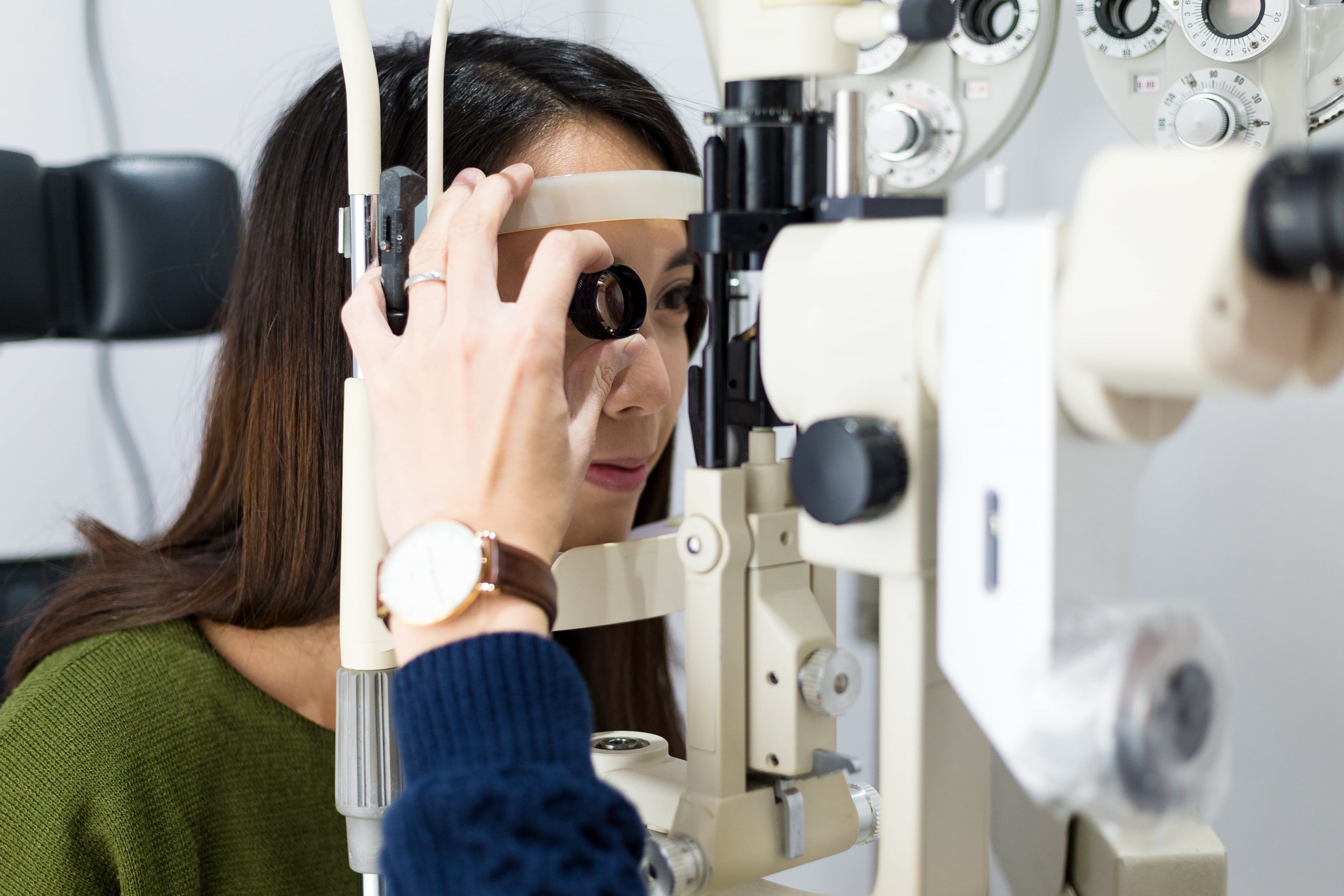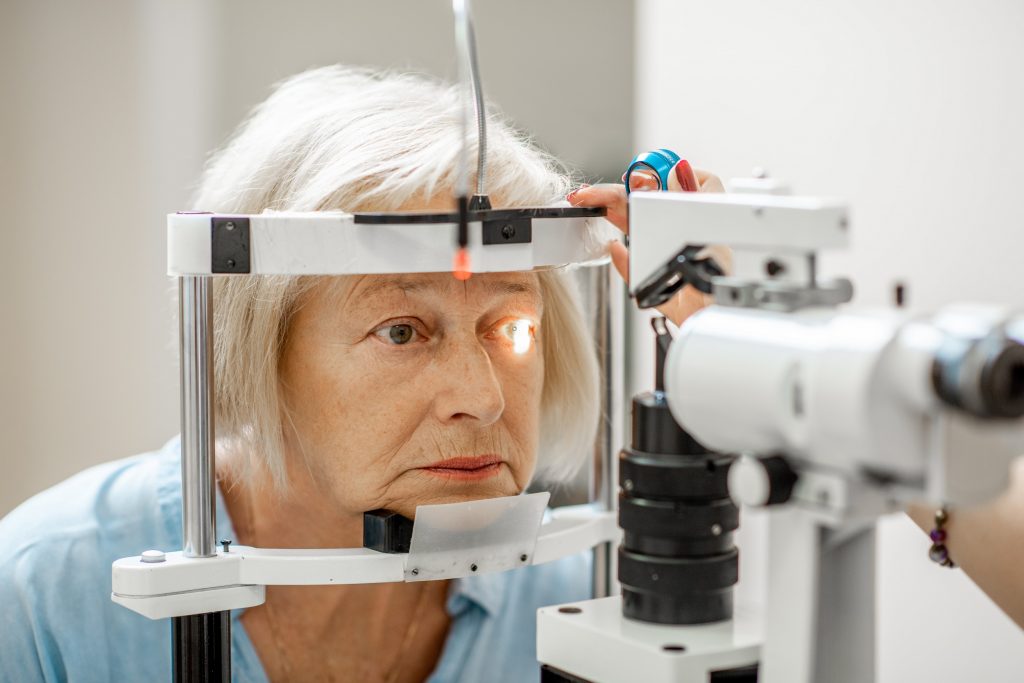What Is Retinitis Pigmentosa?
Retinitis pigmentosa (RP) is a series of rare, inherited retinal illnesses characterized by cell breakdown and loss. Night vision problems and a loss of peripheral vision are common complaints.
It’s an uncommon illness that is passed down from one generation to the next. It hardly affects 1 in every 4,000 people. A family member with RP is affected in almost half of all persons with the disease.
Photoreceptors are retinal cells that initiate the vision process. Light is absorbed and converted into electrical signals by them. These impulses are transferred to additional retinal cells and then to the brain via the optic nerve, where they are processed into what we see as images. Photoreceptors are divided into two categories: rods and cones. Rods are located in the retina’s outer regions and allow humans to see in low and dim light. Cones, which are predominantly found in the center section of the retina, allowing us to see minute details and colors.
Rods and cones are the two types of light-gathering cells in the retina. The rods are located around the retina’s outer ring and are active in low light. The rods are usually the first to be affected by retinitis pigmentosa. Your night vision and peripheral vision (the ability to see to the side) are lost.
Rods are more severely impacted than cones in the early stages of RP. People who lose their rods endure night blindness and a continuous loss of their visual field, which is the area of space viewable without moving the eyes at any given time. The loss of rods eventually leads to the failure of the system and the loss of cones. As cones die in the late stages of RP, people lose more of their visual field and experience tunnel vision. They may have trouble reading detail, driving at night, walking without bumping into things, or recognizing people’s faces and things, among other vital everyday functions.
The majority of cones are located in the center of your retina. They aid in the perception of color and fine detail. When they are affected by RP, the person gradually loses their central vision and their ability to distinguish color.
RP is caused by genetic mutations in any of more than 50 genes. These genes include the instructions for generating proteins that are required by photoreceptor cells in the retina. Some gene mutations are so bad that the gene is unable to produce the appropriate protein, restricting the cell’s function. Other mutations result in the production of a cell-toxic protein. Other mutations result in a protein that is aberrant and does not function properly. Damage to the photoreceptors occurs in all three situations.
Diagnosing Retinitis Pigmentosa?
A retinal examination is used to diagnose RP in part. An ophthalmoscope, a gadget that allows for a larger, clearer view of the retina, will be used by an eye care specialist. This usually exposes abnormally dark pigment deposits on the retina. The illness is called retinitis pigmentosa in part because of the pigment deposits.

Retinitis Pigmentosa Treatments
Treatments for Retinitis Pigmentosa that are Currently Available
If you’ve been diagnosed with retinitis pigmentosa, you should get genetic testing to find out what’s causing it. People with specific genetic mutations may be eligible to participate in a clinical trial of a novel retinitis pigmentosa medication before it becomes publicly available. Understanding which gene causes your condition and inquiring with your eye doctor about clinical trial choices could help you save your vision.
Luxturna gene therapy
Only patients with mutations in both copies of the RPE65 gene are eligible for Luxturna. The retina does not respond to light adequately as a result of this mutation. Luxturna provides a normal copy of the RPE65 gene to the retina via a single injection. The retina’s capacity to respond to light is restored as a result of this procedure. Luxturna can increase night vision and help patients navigate in low-light circumstances if given to patients soon enough after diagnosis. Spark Therapeutics produced Luxturna, which was approved by the US Food and Drug Administration in 2017. The cost for both eyes is $850,000, which may be reimbursed by insurance.
Argus II
The Argus II, an artificial vision device, has also shown promise in restoring vision to persons with late-stage RP. The Argus II, created with NEI support by Second Sight, is a prosthetic device that replaces missing photoreceptor cells. It comprises a surgically implanted light-sensitive electrode on the retina. Signals are wirelessly transmitted to the electrode by a set of glasses with a camera, which is subsequently communicated to the brain.
The Argus II enabled persons with RP to read large print and navigate situations without the need of a cane or guide dog in clinical testing, despite the fact that it does not restore normal vision. The US Food and Drug Administration (FDA) awarded Argus II a humanitarian device exemption in 2012 for the treatment of late-stage retinitis pigmentosa. This indicates that the gadget hasn’t been demonstrated to be useful, but the FDA has concluded that its potential health benefits exceed the dangers. Argus II qualifies for Medicare reimbursement.
Vitamin A
In adults, a daily dose of 15,000 IU’s of vitamin A palmitate delayed the progression of the condition in an NEI-sponsored clinical trial. Because there are so many different types of RP, it’s difficult to say how each patient will react to treatment. Consult an eye doctor to see if vitamin A supplementation is good for you or your child.
Future Treatments in Development for Retinitis Pigmentosa
People suffering from retinitis pigmentosa, a rare genetic eye illness with no cure, may have reason to be hopeful. Existing medicines only help a small percentage of the estimated 100,000 Americans who suffer from this disease. However, improvements in gene therapy may soon enable a larger percentage of patients to regain their vision. Retinitis pigmentosa causes the retina’s light-detecting cells to break down over time, resulting in vision loss. This syndrome can be caused by mutations in more than 60 different genes.
GenSight Therapeutics is experimenting with a medication that could benefit people with retinitis pigmentosa, regardless of their genetic abnormality. Optogenetic therapies are treatments that employ light as a tool to manipulate cells. GenSight’s optogenetic therapy involves an eye injection and the use of high-tech eyewear. The injection provides a gene that aids in the response of retinal cells to light. These cells can send electrical messages to the brain thanks to the goggles. The injection and goggles operate together to try to imitate the work of photoreceptors, which are light-sensing cells that don’t work well in persons with retinitis pigmentosa. To learn how to utilize eyewear, patients must practice for several months.
Five people have received the treatment so far. Some people have developed the ability to recognize high-contrast things on a table and street crosswalk lines. They are still unable to read, recognize faces, or operate a motor vehicle. Retrosense Therapeutics (Allergan), Nanoscope Therapeutics, and Vedere Bio, Inc. are some of the other businesses working on optogenetic medicines (Novartis).
jCyte, a stem-cell treatment startup, announced positive findings from an 85-person Phase 2b clinical trial of its treatment for retinitis pigmentosa patients (RP). In 2021, the company hopes to start a Phase 3 trial for the treatment. Intravitreal injection of retinal progenitor cells (RPCs), which are stem cells that have partially grown into the retinal cells that allow vision, is used to treat the condition. Based on lab trials, scientists claim the treatment can save and possibly restore vision by preserving and potentially rescuing the patient’s existing photoreceptors. The treatment does not involve surgery and can be administered in a matter of minutes in an office setting. The RPCs are injected into the vitreous, which is a gel-like fluid in the eye’s center.
In its Phase 2 clinical trial at Massachusetts Eye and Ear Infirmary, ReNeuron, a stem-cell development company based in the United Kingdom, revealed that three patients with RP were treated with its stem-cell therapy (MEEI). All of them have seen improvements in their vision quickly following treatment. Human retinal progenitor cells (hRPCs) – stem cells that have partially grown into photoreceptors — are injected beneath the patient’s retina as part of the treatment. Researchers expect that the injected hRPCs will integrate into the retina and fully mature into photoreceptors, replacing those lost to illness and therefore restoring vision, based on results from preclinical experiments. This trial was made feasible thanks to prior research financed by FFB.
Clinical trials for XLRP (RPGR) gene therapy are being conducted by three companies. Biogen is currently undergoing a Phase 2/3 experiment. Phase 3 trials are being planned by AGTC and MeiraGTx. In their Phase 1/2 trials, all of the firms showed improvements in eyesight (retinal sensitivity and/or visual acuity). Biogen, on the other hand, failed to satisfy its Phase 2/3 trial’s endpoints.
Nacuity, based in Dallas, has begun a Phase 1/2 clinical trial for its oral antioxidant therapy in Australia. The Foundation Fighting Blindness is funding up to $7.5 million in the development of a promising new medicine for retinitis pigmentosa, Usher syndrome, and other eye diseases. N-acetylcysteine-amide (NACA) is a chemical that protects retinal cells from oxidative stress and hence slows eyesight loss. NACA decreased retinal degeneration in animal models of RP in prior Foundation-funded lab investigations at Johns Hopkins University.
The first patient in ProQR’s Aurora Phase 1/2 clinical trial for autosomal dominant retinitis pigmentosa (adRP) caused by the P23H mutation in the gene RHO has received QR-1123, the company’s developing therapy for adRP caused by the P23H mutation in the gene RHO. The variation is the most common cause of adRP in the United States, affecting about 2,500 persons. The study will be conducted at the Retina Foundation of the Southwest in Dallas, Texas, and VitreoRetinal Associates in Gainesville, Florida, with a total of 35 participants.

Living with Retinitis Pigmentosa
There are a variety of services and technology available to assist people with vision loss in doing daily tasks and maintaining their independence. A team of professionals, including occupational therapists, orientation and mobility specialists, licensed low vision therapists, and others, is essential in addition to an eye care practitioner.
Treatment for Retinitis Pigmentosa in Children
Low vision aids that enhance existing eyesight may be beneficial to children with RP. Special lenses, for example, amplify central vision to broaden the visual field and minimize glare. Text-reading computer applications are widely available. Text can be adjusted to fit one’s eyesight on closed-circuit televisions using cameras. A gloomy or dim atmosphere can be adjusted with the use of portable illumination instruments. People can learn to use a cane or a guide dog through mobility training, and eye scanning techniques can assist people to maximize their remaining eyesight. When a child is diagnosed with low vision, he or she is directed to a low vision expert for a thorough examination. Parents may also wish to visit with the child’s teachers and administration to ensure that required accommodations are made.












